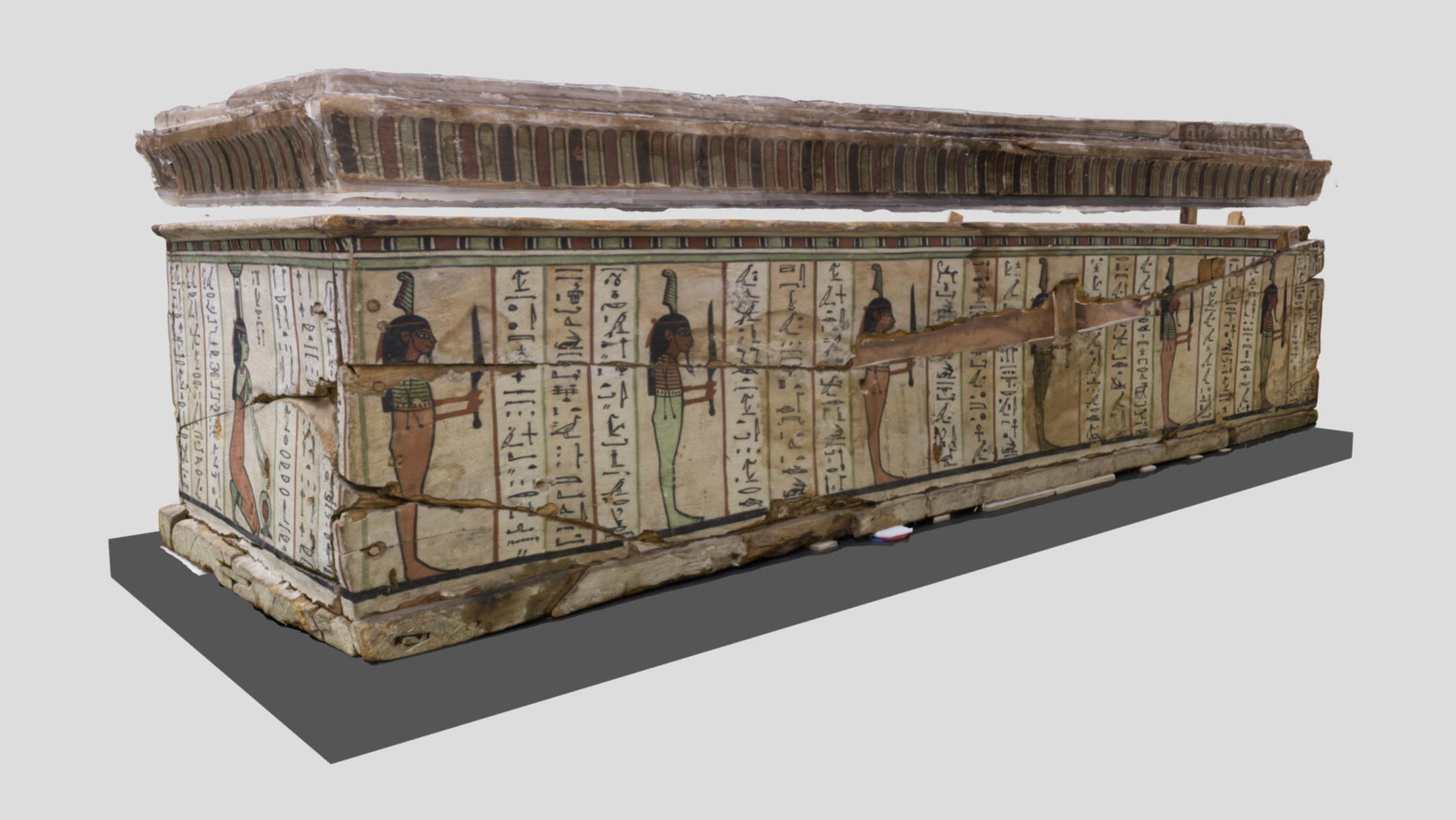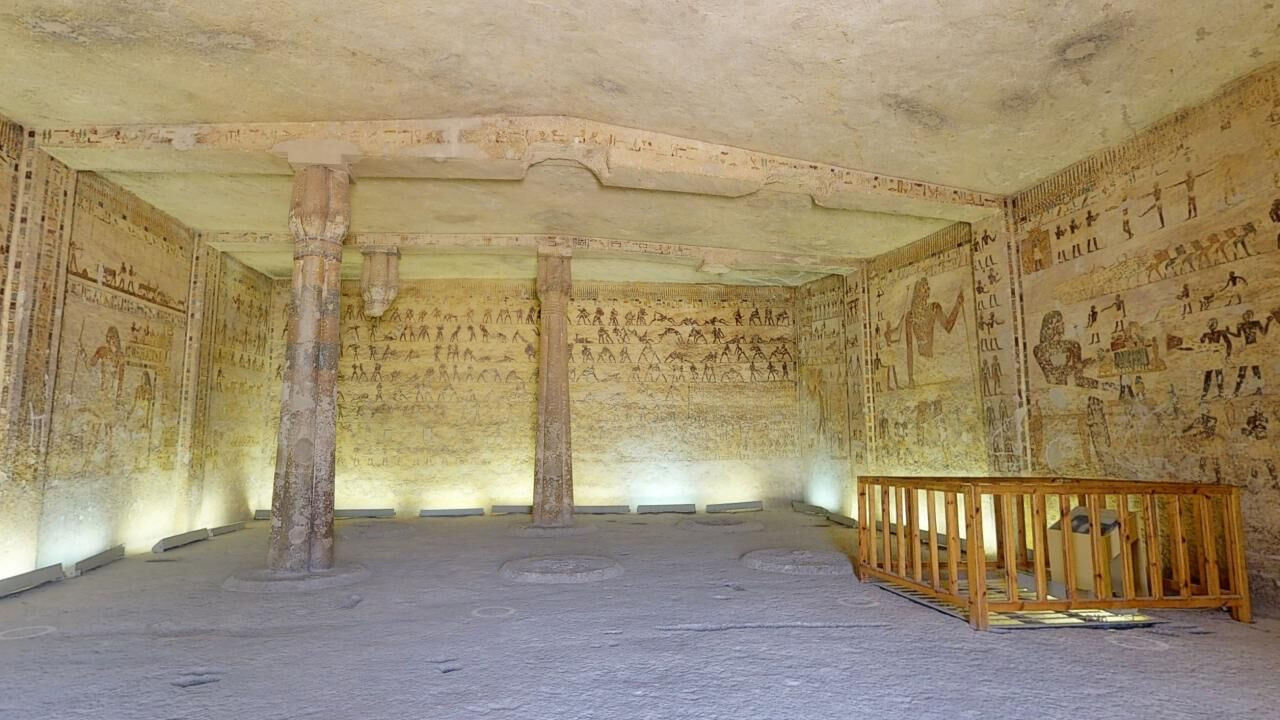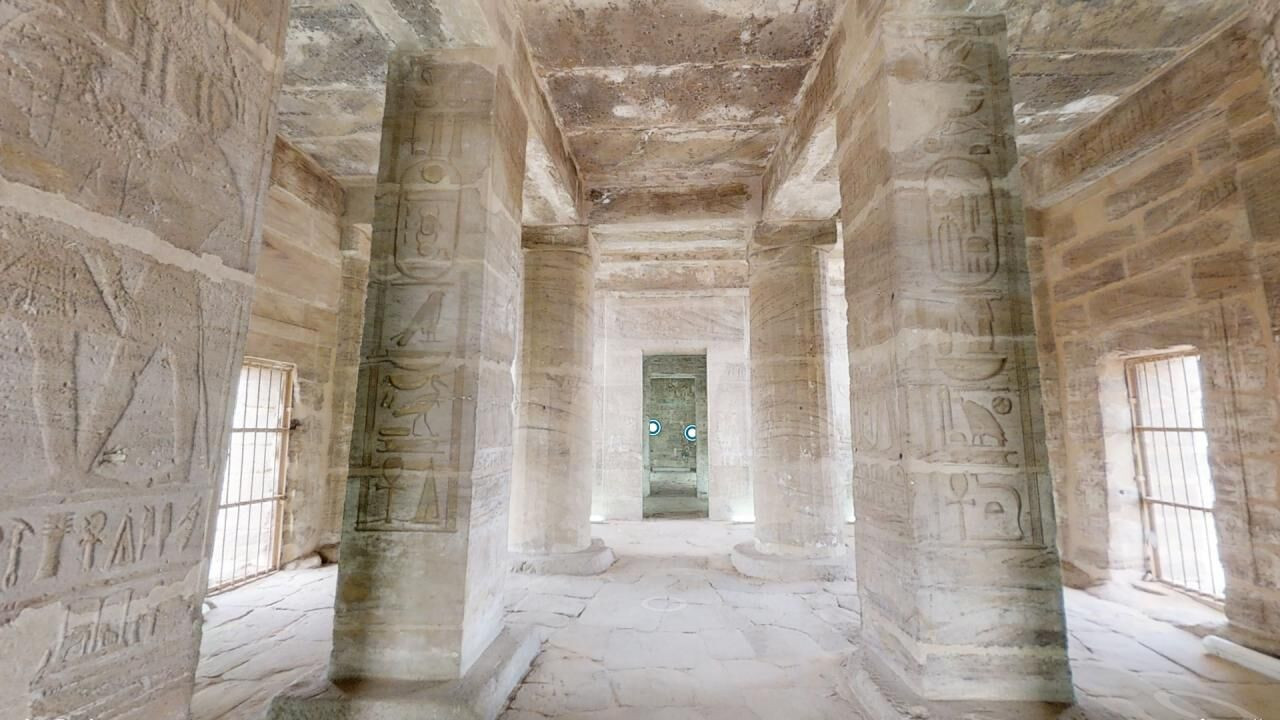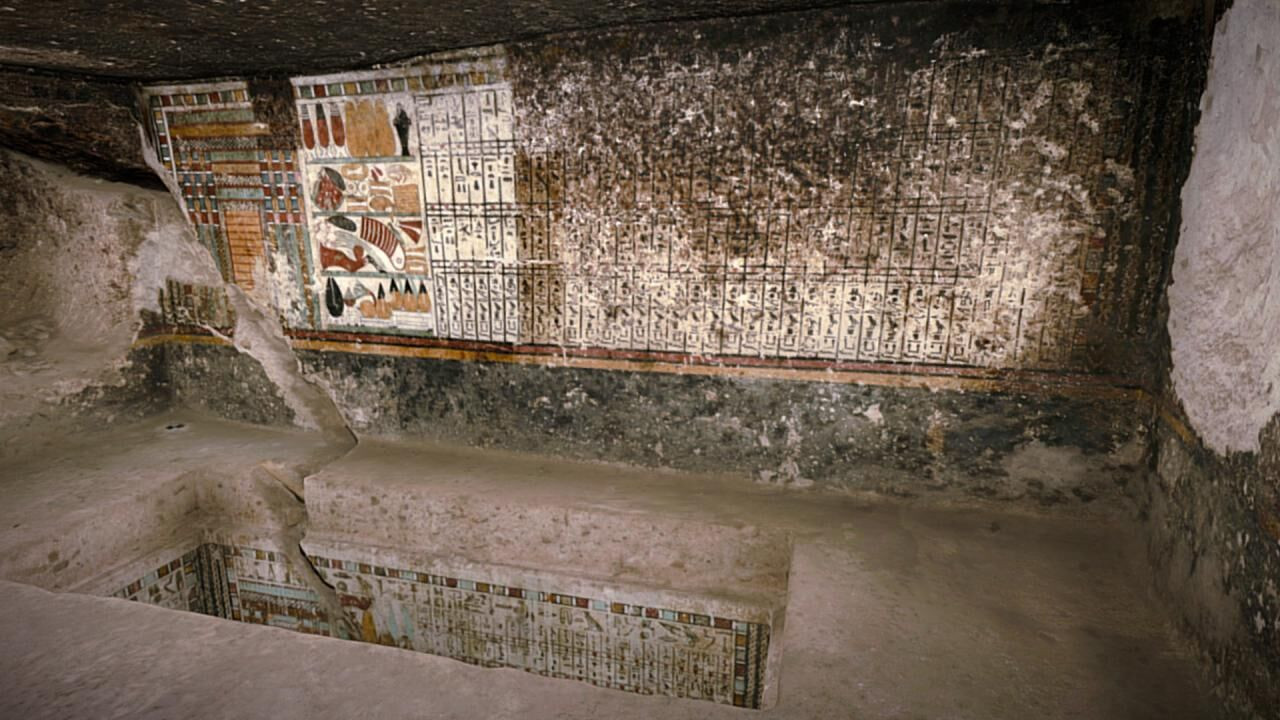The Book of the Dead in 3D. Digital Analysis, Visualization and Dissemination of the Funerary Culture of Ancient Egypt
Rita Lucarelli
Written by Rita Lucarelli, Middle Eastern Languages and Cultures, UC Berkeley

Outer Coffin of Ankh-Wenennefer
Ancient Egypt is among the most studied ancient civilizations in the world and the museum collections of Egyptian antiquities keep attracting an impressive number of visitors, while Egyptology has become a fundamental discipline to include in university curricula focusing on the study of the ancient world. However, there are categories of ancient Egyptian artifacts that remain hidden to the public as well as difficult to study for specialists. This is the case of the coffins that housed the deceased’s mummified body. Those produced in the First Millennium BCE, which are the focus of this project, were anthropoid in shape and decorated with spells and scenes mainly taken from the so-called ancient Egyptian Book of the Dead. The latter is a corpus of ancient Egyptian magical, ritual and funerary texts, often accompanied by images and attested from the beginning of the New Kingdom (1500 BCE) to the Greco-Roman period, until the end of the 4th Century AD. Their large dimensions and heavy weight (especially two-ton stone sarcophagi) make them hard to photograph and document in full. Wooden coffins and stone sarcophagi end up being “forgotten” treasures, with most of them lying in museum storage rooms that have extremely restricted access. Scholars must make travel arrangements to see the artifacts, and this research is subject to the availability of museum staff, which is a significant constraint, especially in smaller collections. Even if the coffins are in a public exhibition space, they are usually standing up against the walls, encased in glass that does not allow for professional photography, and they cannot be moved without special arrangements with curators and professional art movers. For this reason, the field of “coffin studies” has focused primarily on the most easily accessible and popular royal and elite coffins, which are on exhibition in major museums. However, a large number of ancient Egyptian coffins are housed in minor collections where the lack of curatorial staff and exhibition space makes them difficult to access. This project aims to create and disseminate virtual versions of those unpublished, hidden artifacts through the use of photogrammetry (mainly through the software Agisoft Metashape) and textual annotations on 3D models, to be shared on a digital platform.
Since 2015 and with the support of small seed grants, the project has produced eighteen 3D models of previously unpublished ancient Egyptian coffins, which are kept in the storage rooms of the Phoebe A. Hearst Museum of Anthropology at UC Berkeley and in other Egyptological collections in California and in the US. These 3D models are currently available on the project’s website and on its Sketchfab page. Each of these coffins has been thoroughly studied and all the available information on provenance, date and prosopography, as well as the translation and transcription of the text decoration have been shared through the annotations to the 3D models; these annotations are also accessible on the website and constitute the basis for further studies and publications. During 2020, because of the museums closure due to the COVID 19 pandemic, the project team, composed also by PhD students from Cairo, has focused on the accessibility and shareability of the present contents by adding an Arabic version of the website. The website of the project has already become a useful educational tool for the students of Egyptology and archaeology at UC Berkeley. Some of the 3D coffin models have been integrated in the databases and websites of the museums where they are kept (the Hearst, the Rosicrucian Museum of San Jose, the San Francisco State University Global Museum) and it is also becoming the basis for a new stage of research, aiming at developing VR and AR apps in order to “bring back” the coffins in their original archaeological context, i.e. the tomb.
Currently, a major outcome is to make accessible the already produced 3D models and their annotations on a new platform (under construction), in addition to the new coffins in 3D that will be created during the three years of the project. With a considerable number of new coffins added to our 3D collection, the project’s digital platform will provide access to a large number of metadata such as the following:
- translation and transcription of the magical texts decorating the coffins
- iconographical analysis of the religious scenes complementing or replacing the texts
- contextual and archaeological analysis for each item, which will include, when known, information on the coffin’s owner, place of origin in Egypt and exact date.
Unfortunately, the 3D models cannot currently be made accessible for the visually or hearing impaired, but it is hoped that the current development of multimodal interfaces for allowing blind and visually impaired users to access 3D and virtual environments will soon provide a chance to apply similar technologies to our platform.
The creation of annotated 3D models will increase equity, diversity and inclusion in the study of this material as scholars and others can freely access the models worldwide. By publishing less-known coffins in minor collections and museums with limited exhibition spaces, this project will diversify the historical record and will foster connectedness by uniting geographically dispersed but related content and comprehensiveness by providing clear information on the artifacts’ provenance and context. Strategic collaborations with museums where the coffins are housed allows the project to benefit the museums themselves, as it is already occurring with the Phoebe A. Hearst Museum of Anthropology at UC Berkeley, allowing them to expand the communities that they can serve. Finally, the core value of openness is central for this project, since the digital platform where the annotated models will be available is conceived as a fully open and user friendly viewer, useful for various constituents: scholarly research, museum outreach, university curricula, K-12 education, and the public at large.
Documenting and disseminating 3D models of coffins from collaborating museums and publishing what provenience information may be available will allow scholars to re-establish links between objects that are now geographically separated, better understand the historical record, and increase the visibility of the forgotten individuals who once lay in these beautiful artifacts.
1) The Inner and Outer Coffins of Ankh-Wenennefer
Outer Coffin of Ankh-Wenennefer
Inner Coffin of Ankh-Wenennefer
The two nested coffins of Ankh-Wenennefer, the innermost still housing the remains of the deceased, probably originate from excavations at Akhmim in the 1880s, even though they were purchased in Luxor in 1891 by American entrepreneur Allen C. Mason. In 1892 the coffins were donated to the Washington State Historical Society in Tacoma, Washington, where they have been held since (apart from occasional loans).
Ankh-Wenennefer was a priest in the temples at Akhmim, as his titles on the coffin indicate, which include Stoist priest at Akhmim, God’s Servant for Min and Horus-Who-Protects-His-Father. He may also have held a priestly office in Dendara. He came from a priestly family; his father and grandfather were both God’s Servants in Akhmim. Ankh-Wenennefer probably lived during the late period; his inner coffin can be dated to the timespan between the 26th and 30th dynasties.
For more information on Ankh-Wenennefer and his coffins, visit the site The Book of the Dead in 3D.
2) The Cartonnage, Outer and Middle Coffins of Nespaperennub
Outer Coffin of Nespaperennub
Middle Coffin of Nespaperennub
The Cartonnage of Nespaperennub
Nespaperennub was a priest at the Karnak temple of Amun in Thebes during the 22nd Dynasty. He might be identified with the Nespaperennub whose name appears on fragments from his grandson Djedhoriuefankh’s cartonnage mummy case found in TT 99.
Nespaperennub’s burial has not been found; however, his elaborately decorated coffin consisting of three nesting parts and his mummy were purchased by wealthy German-American entrepreneur and public figure Adolf Sutro in the early 1880s and were displayed at the Sutro Baths in western San Francisco, California. Luckily, they were transferred to the San Francisco State University before the Baths complex burned down in 1966.
For more information on Nespaperennub and his coffins, visit the site The Book of the Dead in 3D.
Back to Gallery






